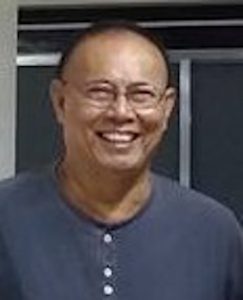YESTERDAY , we heard the interview of Island Garden City of Samal (IGaCoS) Mayor Al David Uy with the online news platform Newsline Philippines. Mayor Uy was kind of summarizing the position of government insofar as the construction of the Samal Island-Davao City Connector Bridge Project.
, we heard the interview of Island Garden City of Samal (IGaCoS) Mayor Al David Uy with the online news platform Newsline Philippines. Mayor Uy was kind of summarizing the position of government insofar as the construction of the Samal Island-Davao City Connector Bridge Project.
The mayor told Newsline-Philippines that the project, as of now, is considered “Go” and that it is only a matter of time before the contractor can start the project implementation.
He said that the contractor has already been given the go-signal or Notice to Proceed by the Department of Public Works and Highways (DPWH). The latter is the lead implementing agency. In other words, despite the protests by some sectors on the bridge alignment or route – not necessarily on the bridge itself as a project – the work could start anytime soon.
The Samal City mayor clearly explained why the consultant firm recommended to the DPWH the present bridge route instead of the one proposed by the Japan International Cooperation Agency (JICA) despite the relatively smaller amount to be expended on the project if it were located in the JICA proposed route. The issue in the original proposed site is not about the cost in the actual construction but in the long-run. According to Mayor Uy in that Newsline Philippines interview, even if the bridge is to be located in a route where the Samal approach will be at the property offered to be donated by the family of the owners of Paradise Island Resort, still in the long term it will end up pretty much, much costly because of other factors such as sea transport cost. In fact, the disavowal by the consultant firm is not only in the prolonged cost escalation but also in the peace and security consideration of the city’s people and the project itself.
Mayor Uy cited the reason of the consultant firm in not considering the proposed donation of the protesting Rodriguez family. He said that in doing so, the Davao approach would have to be located at the COACO beach area in Sasa, where almost all oil depots are located. Suppose the short distance between the Davao side and the Samal approach is factored. In that case, the centermost portion must be elevated to the maximum, thereby affecting the angle with which vehicles using the bridge will have to ensure their capability to climb. Otherwise, it would risk getting stalled on the route going up.
On the issue of the proposed and now adopted bridge route as recommended by the consulting company, the mayor assured the people of his city and several watchdogs for the environment that he is certain there are mitigating measures to be undertaken by the contractor and the government.
Meanwhile, if we have to hear the side of the affected land and private resort owners, specifically the Rodriguez-Lucas families, it would seem that all that the mayor was saying that had happened and about to happen is totally alien to the protesting sectors.
Meaning, they are not aware that the contractor has already acquired their Notice to Proceed. In fact, in an earlier conversation with Mr. Julian Rodriguez III, the affected property owners have yet to receive a notice for the expropriation proceedings. He even claimed there were no proper consultations conducted. Neither was there any formal response to their offer to the government for donating their family property to be used for the location of the Samal approach of the bridge.
Here, we feel inclined to believe that there were no proper consultations with the various stakeholders on the project. Yes, the government or the project proponent could not have been talking about the start of the project implementation any time soon if they knew that there were still major impediments that could even end up in legal action haunting the project implementation.
And we are certain as well that the leading protesters to the project, who are not necessarily against it but for its alignment, will not also risk the credibility and honor of their families by telling half-truths on the projects and using their advocacy for environmental protection to put a premium on their cause.
In this context, we see the need for a more transparent engagement between the proponents of the bridge project and the adversely affected stakeholders to effectively thresh out their conflicting views and knowledge of the same.
By having those dialogues again – if indeed there were such activities done previously as disclosed by Mayor Uy — opportunities will be opened for discussing the various concerns, and solutions may be offered and deliberated by both sides. Easily it is in this kind of engagement that a win-win solution can best be arrived at.
Again, we would want to quote our favorite professor in a Masteral degree program on Public Administration that we once took some years back: “The real measure of development is when projects to the effect will have more beneficiaries than sufferers.”
In the case of the long-anticipated Samal-Davao Mainland bridge, it is very clear that there is no other intention but the development of the city and the improvement of the lives of people in the island.
However, it does not mean a lot of the would-be “sufferers” among the island’s residents, may they be persons or businesses – should just be ignored and be counted as statistics of the project’s collateral damage.

